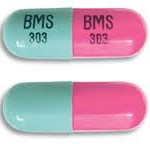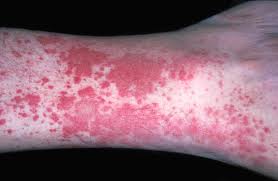Vasculitis disease or also known as angiitis and arteritis is the swelling of the blood vessels. Vasculitis disease causes the walls of the blood vessels to thicken, weaken, narrowed and develops scar. There are many kinds of vasculitis that are considered as acute, last only for a short period of time while some are chronic which occur in long-term basis. Vasculitis disease can be serious that the organs and tissues that are being supplied by the affected vessels do not acquire an adequate blood. Deficiency of blood in affected parts may lead to damage of organ and tissue, worse even death. Vasculitis disease may have an effect on anyone, although some kinds of it are more frequently occur with certain groups. There are types of vasculitis disease that simply get better on their own but some have need of proper treatment by taking medicine for a long period of time.
What are the signs and symptoms of vasculitis?
The signs and symptoms of vasculitis disease may differ on its types but generally, the following are what most people with vasculitis may experience.
- Fever
- Loss in weight
- Fatigue
- Joint and muscle pain
- Loss in appetite
- Numbness
The following are the signs and symptoms for certain types of vasculitis disease.
- The Behcet’s syndrome causes the swelling of the arteries and veins that usually occurs in the age of 20s and 30s. Inflammation of the eye, mouth and genital ulcers, and acne-like wound on the skin are some of the signs and symptoms of this type of vasculitis disease.
- The Buerger’s disease or also known as thromboangiitis obliterans causes the clot and swelling of the blood vessels in the extremities. This type of vasculitis disease is strongly linked with cigarette smoking with signs and symptoms of soreness on fingers and toes, painful sensation in the hands, arms, feet and legs.
- The Churg-Strauss syndrome or also known as allergic granulomatosis and allergic angiitis that frequently affects the blood vessels in the lungs. It is frequently connected with asthma.
- The Cryoglobulinemia is frequently related with hepatitis C infections. It is manifested with the rashes on the lower extremities, arthritis, weakness and damage of the nerve.
- The Giant cell arteritis which causes the swelling of the arteries in the head particularly in the temples. It has signs and symptoms of scalp tenderness, headache, and jaw pain when chewing, blurred or double vision that lead to blindness.
- The Henoch-Schonlein purpura is causing the swelling of the blood vessels of the joints, skin and kidneys. It has signs and symptoms of blood in the urine, abdominal discomfort, joint pain and rashes or purpura on the buttocks, legs and feet. It normally affects children though it can happen at any age.
- The Hypersensitivity vasculitis has a major sign of appearance of red spots on the skin that can be triggered by an allergy.
- The Kawasaki disease or also called mucocutaneous lymph node syndrome is a type of vasculitis disease that normally affects children below 5 years of age. It has signs and symptoms of skin rashes, fever and eye inflammation.
- The Microscopic polyangiitis have an effect on tiny blood vessels in the lungs, kidneys and skin. It is manifested with fever, skin lesions and weight loss even without trying.
- The Polyarteritis nodosa have an effect on medium-sized blood vessels in the skin, kidneys, heart, muscles, peripheral nerves and intestines. It is manifested with purpura, soreness of the skin, abdominal pain, muscle and joint pain and kidney problems.
- The Takayasu’s arteritis affects the largest arteries in the body that usually take place in young women. It has signs and symptoms of high blood pressure, headaches, feeling of cold or numbness in the extremities, visual disturbances and lessened or lack of pulses.
- The Granulomatosis with polyangiitis is a type of vasculitis disease which causes the swelling of the blood vessels in the nose, throat, lungs and kidneys. It is manifested with chronic sinus illness, nosebleeds and nasal stuffiness. The kidney, one of the major organ of the body is frequently affected wit this disease but most people have no manifestations till the damage is highly developed.
What are the causes of vasculitis disease?
Vasculitis disease happens when the immune system sees the blood vessel cells as foreign by mistake. The immune system considers these cells as an intruder like bacteria or virus. The reason behind this is not understandable but it trigger with some infection, by some allergic reactions or cancers. The blood vessels that are affected by vasculitis disease become swollen which resulted the thickening of the blood vessel wall. The thickened blood vessel reduces the amount of blood flow going through the different tissues of the body. There are some cases that the affected blood vessel may form blood coagulation which hinders the flow of the blood. There are times that the blood vessels deteriorate forming a bulge called aneurysm which lead to life-threatening.
What are the treatments for vasculitis disease?
There is a definite treatment for vasculitis disease for each type of vasculitis and how severe the condition. Some of the medications include the following.
1.    Intake of steroids.
 This treatment is being used to manage the inflammation. Some of the corticosteroid medications are the methylprednisolone or prednisone. But the side effects of taking steroids can be serious particularly when taken in an extended period of time. Some of the adverse effects are diabetes, weigh gain, thinning of the bone or osteoporosis.
This treatment is being used to manage the inflammation. Some of the corticosteroid medications are the methylprednisolone or prednisone. But the side effects of taking steroids can be serious particularly when taken in an extended period of time. Some of the adverse effects are diabetes, weigh gain, thinning of the bone or osteoporosis.
2.    Medications to manage the immune system.
 Severe cases of vasculitis that shows no reaction to steroids may have the cytotoxic medications that use to destroy the immune system cells liable in causing the inflammation. Examples of cytotoxic drugs are azathioprine and cyclophospamaide.
Severe cases of vasculitis that shows no reaction to steroids may have the cytotoxic medications that use to destroy the immune system cells liable in causing the inflammation. Examples of cytotoxic drugs are azathioprine and cyclophospamaide.
3.    Be aware of your situation.
 Try to find out everything about vasculitis disease and its treatment. Try to identify the probable undesirable effects of the medications you are going to take and inform your doctor of any changes in your physical condition.
Try to find out everything about vasculitis disease and its treatment. Try to identify the probable undesirable effects of the medications you are going to take and inform your doctor of any changes in your physical condition.
4.    Prefer a healthy balanced diet.
 Eating nutritious foods like whole grains, fresh fruits and vegetables, low fat dairy products, fish and lean meat may stay away from possible health problems cause by some medications. If you are taking corticosteroid medication consult your doctor if you require taking calcium supplement or vitamin D.
Eating nutritious foods like whole grains, fresh fruits and vegetables, low fat dairy products, fish and lean meat may stay away from possible health problems cause by some medications. If you are taking corticosteroid medication consult your doctor if you require taking calcium supplement or vitamin D.
5.    Do regular physical exercise.
 Do regular exercises like walking to avoid diabetes, high blood pressure and bone loss especially when taking corticosteroid medication. You can obtain a lot of benefit in doing physical exercise in most days of the week. If you are not used to it, try to begin slowly and build up progressively. Ask your doctor of what exercise plan fit for you.
Do regular exercises like walking to avoid diabetes, high blood pressure and bone loss especially when taking corticosteroid medication. You can obtain a lot of benefit in doing physical exercise in most days of the week. If you are not used to it, try to begin slowly and build up progressively. Ask your doctor of what exercise plan fit for you.
All these treatments may help to control vasculitis disease especially if is treated early. Do not hesitate to consult your doctor immediately if you experience the signs and symptoms of vasculitis disease.
Â
